Walk into a Japandi-inspired living room, and you’ll instantly feel it. That exhale-your-shoulders kind of calm. It’s clean without being cold, cozy without feeling cluttered. A mix of Japanese minimalism and Scandinavian warmth, Japandi design isn’t just a style—it’s a lifestyle choice.
And if you’re anything like me, you want a home that makes you feel at peace, but still says something about who you are. So here are 10 Japandi living room ideas I’ve tried (and loved), mixed with real talk, product recs, and a few thoughts on what to skip.
1. Embrace Warm Neutrals, Not Hospital White
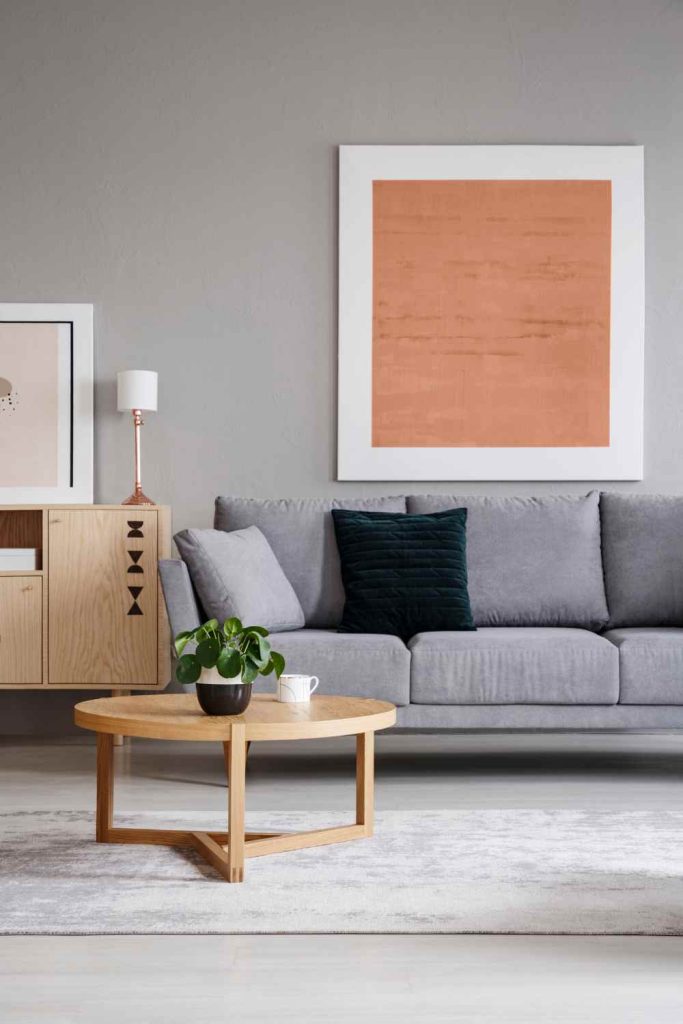
Sure, white walls are crisp, but in Japandi, tone matters. Stark white? Too sterile. Instead, go for warm off-whites, mushroom greys, oatmeals, and soft taupes. These colors invite calm—not cold.
Real Talk: If your room already feels too bright or boxy, a softer wall color can work magic. Even swapping out bright white curtains for beige linen panels changes the mood.
Try This:
- Stone-colored linen curtains
- Clay-toned cushion covers with textured weave
- Muted beige wall art or canvas prints
2. Go Low… But Not Too Low
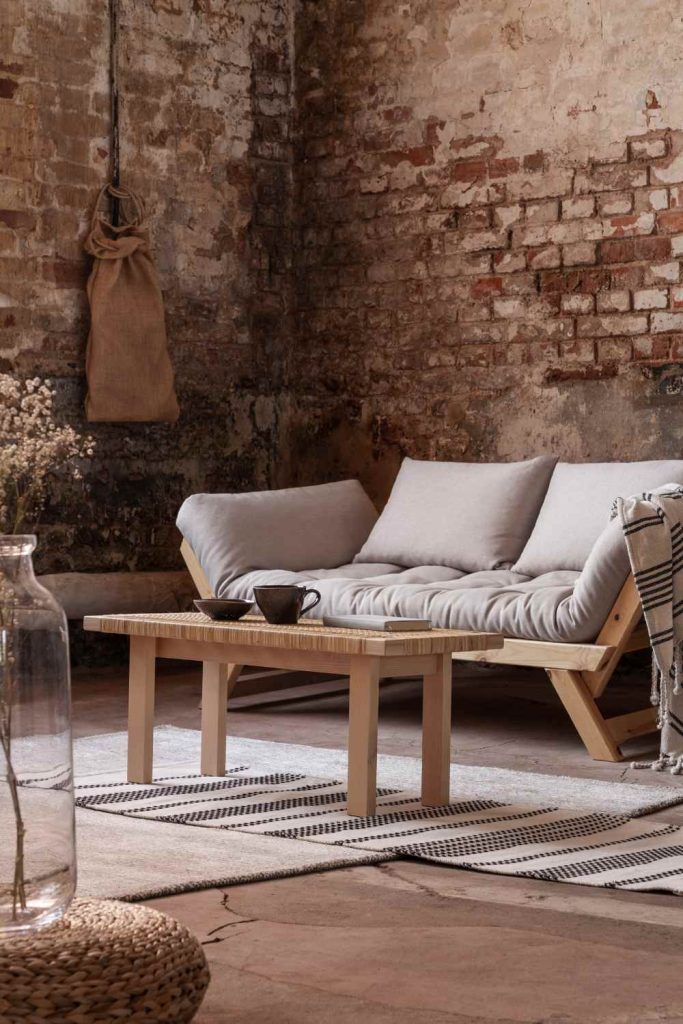
Japandi furniture hugs the ground—literally. It’s meant to make your space feel grounded, anchored, peaceful. A low coffee table or a low-profile sofa can do just that.
But Here’s the Thing:
Too low and it’s back-breaking. Especially if you’re tall or have pets jumping in and out of view. I say: mix low furniture with standard-height accent chairs or poufs for balance.
Product Pick:
- Ash wood coffee table with rounded edges
- Modular floor cushions in natural linen
3. Say Yes to Natural Wood (Just Don’t Overdo It)
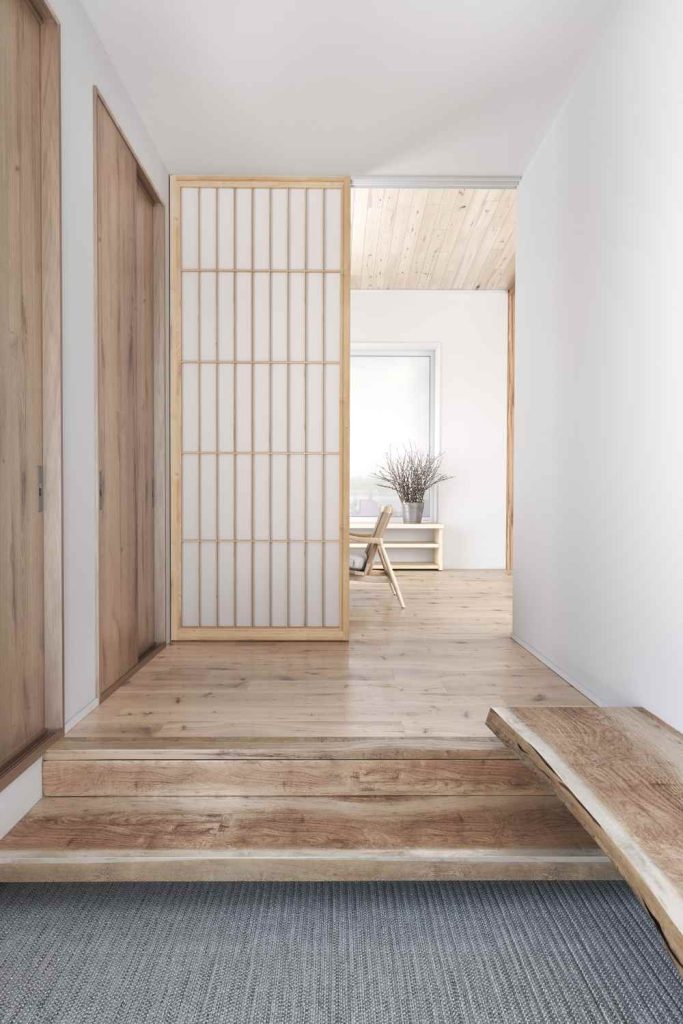
Raw wood is the backbone of Japandi style—light oak, ash, or bamboo with matte finishes. But if every piece in the room matches perfectly? It starts to look more showroom than serene.
Pro Tip: Mix different light wood tones for a layered, lived-in look. Bonus points for pieces with visible grain or small imperfections.
Try This:
- Floating wood shelves with black metal brackets
- Handmade wooden trays for your coffee table
- Light-stain media console with hidden storage
4. Less Stuff, More Soul

Japandi isn’t about owning nothing—it’s about owning things that matter. Every piece on display should have a reason to be there. But here’s where it gets fun: those few objects? They can be full of texture, culture, and character.
Personal Note: I keep three things on my side table: a hand-thrown mug, a single stem in a wabi-sabi vase, and a linen coaster. That’s it. And it feels just right.
Product Picks:
- Irregular ceramic vases (think asymmetry is beauty)
- Soft, imperfect linen table runners or throws
- Small sculptural candleholders
5. The Power of Imperfection (Wabi-Sabi Vibes)
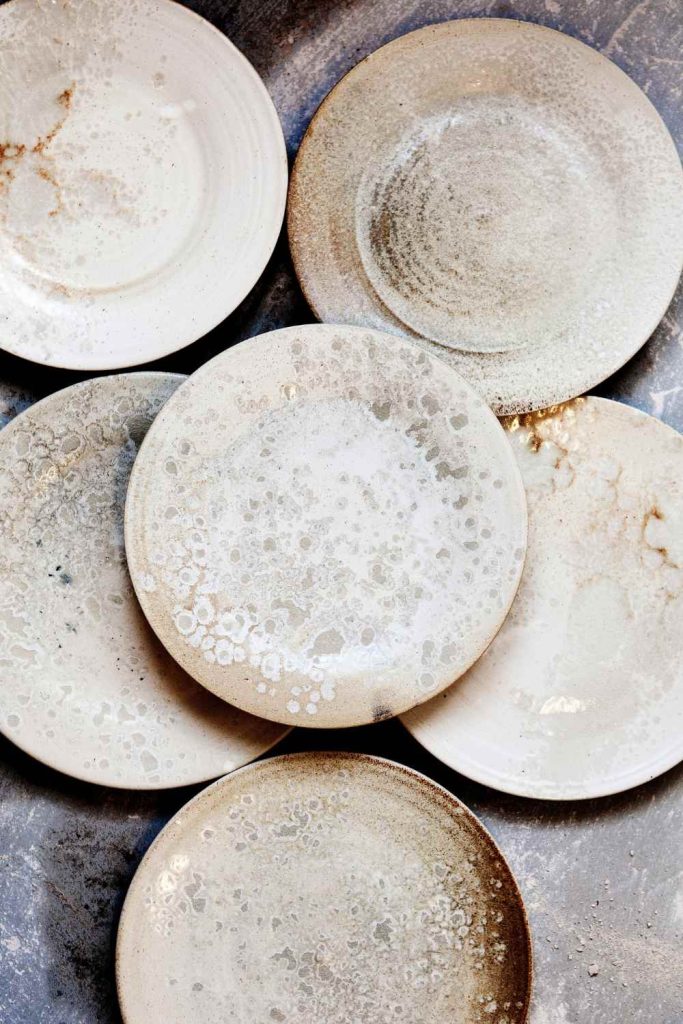
Japandi quietly celebrates imperfections—scuffed leather, wrinkled linen, uneven pottery. It’s not messy, it’s real. That little chip in your favorite bowl? Character. The lopsided glaze on your vase? Charm.
My Take: The most beautiful objects in my space are the ones that aren’t perfect. It reminds me to stop aiming for a “magazine” house and just live in it.
Try This:
- Hand-thrown pottery bowls or mugs
- Crinkled linen cushion covers or slipcovers
- Distressed wood stools that double as side tables
6. Add Greenery—But Keep It Sculptural

Japandi doesn’t mean a jungle. One or two plants—placed with intention—are all you need. Go for sculptural shapes like a rubber plant, olive tree, or a bonsai if you’re bold.
Pro Tip: Big leaves. Interesting silhouettes. Simple pots.
Try This:
- Terracotta or stoneware planters in matte finishes
- Low, wide bonsai pots for your console table
- Neutral plant stands in bamboo or black metal
7. Textures Do the Talking
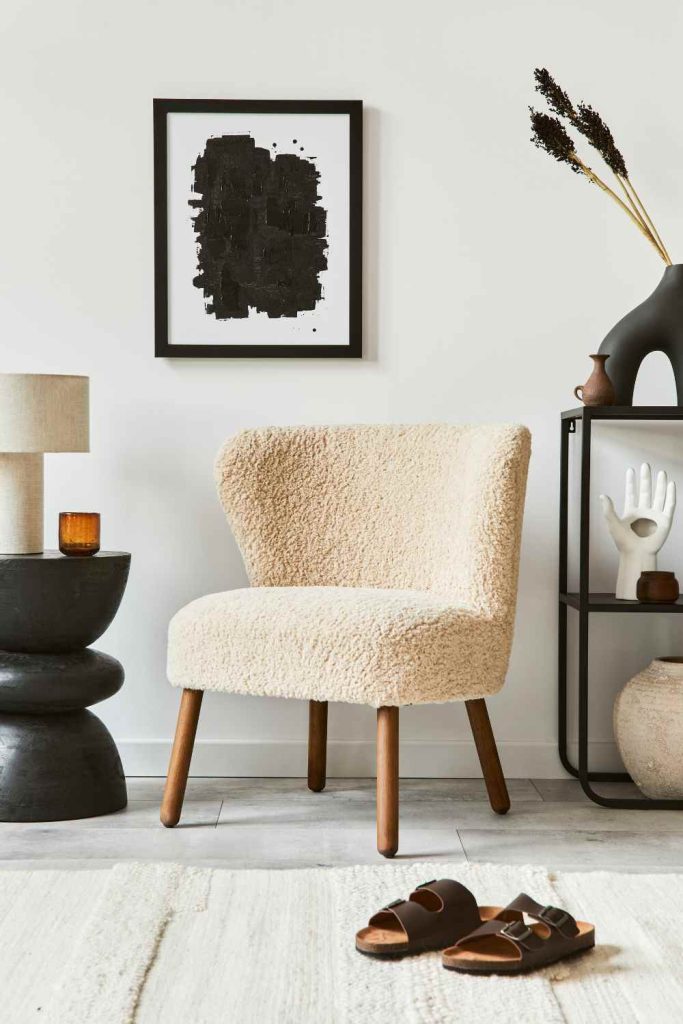
Texture is everything in Japandi. Since the color palette is neutral, it’s the feel of the fabrics and materials that create depth. Linen, boucle, felt, raw ceramics, even jute.
Style Hack: Layering is key. Think: wool throw on a linen sofa, jute rug under a soft ottoman, ceramic tray holding a candle and matchbook.
Try This:
- Off-white boucle accent chair
- Linen blend oversized cushions
- Flatwoven jute rugs with cotton border
8. Soft Lighting Only, Please
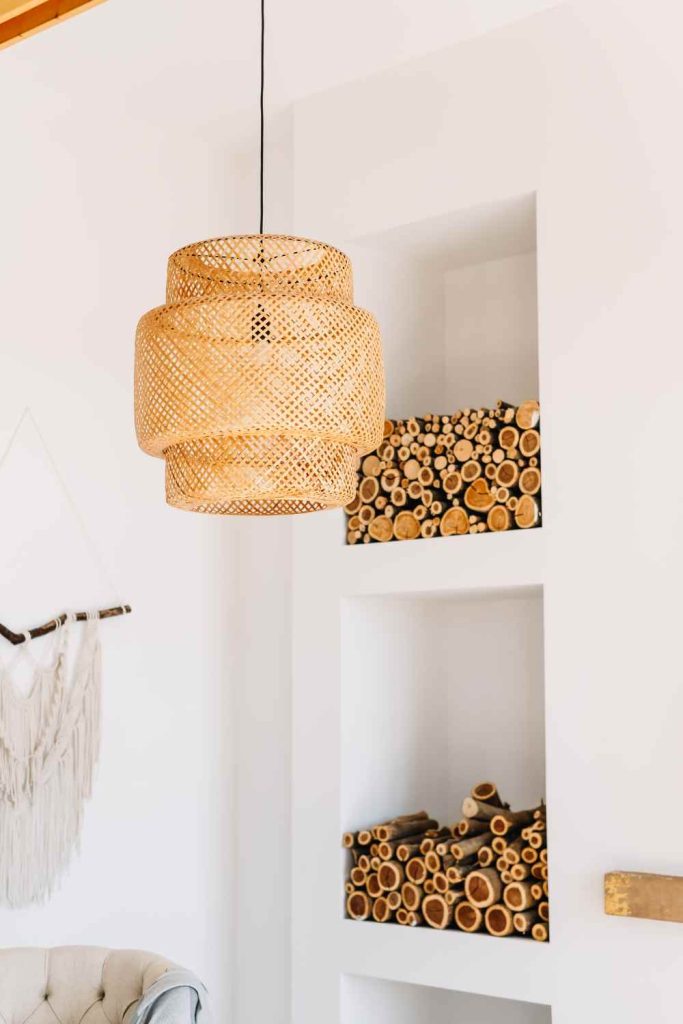
If your overhead light is doing all the work, your room’s not relaxing—it’s under interrogation. Japandi favors soft, diffused lighting from multiple sources: floor lamps, paper lanterns, wall sconces.
My Tip: Add at least three lighting points in your living room. And yes, dimmable bulbs are a must.
Try This:
- Rice paper pendant lamp (classic Japandi)
- Wood + linen floor lamp for corner vibes
- Amber glass table lamp on a side table
9. Hidden Storage = Inner Peace
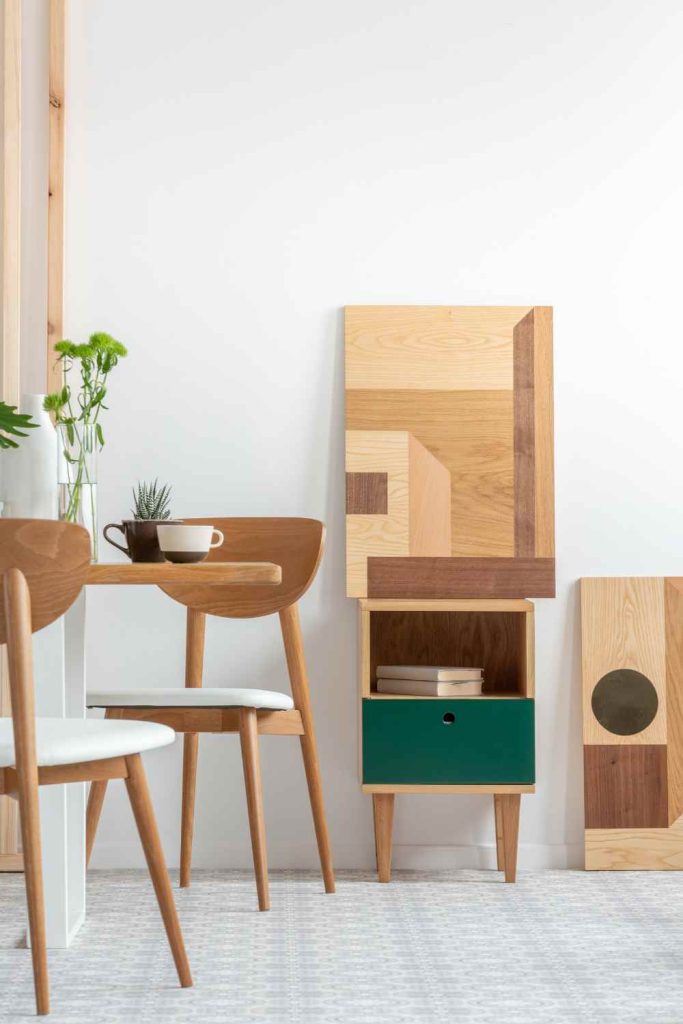
Clutter kills Japandi. But life happens—we all have remote controls, chargers, and random junk. Solution? Furniture with built-in storage that hides the mess while staying stylish.
Try This:
- Lift-top coffee table with hidden compartment
- Storage ottoman that doubles as extra seating
- Rattan baskets tucked under an open console
10. Layer In Meaningful Decor
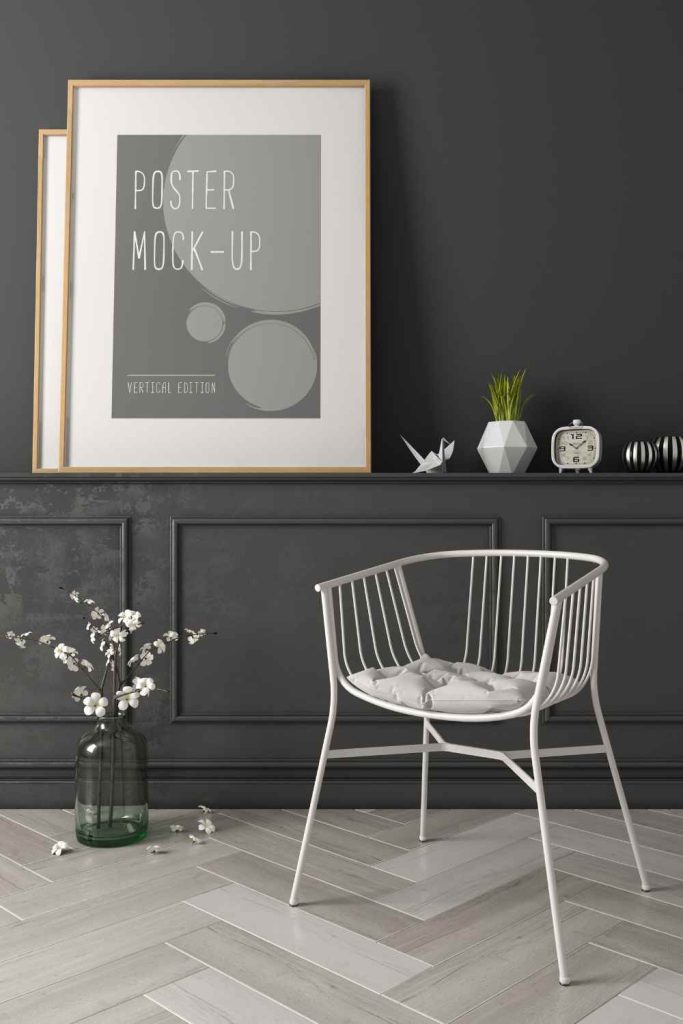
Japandi is personal. A travel photo in a neutral frame, a handmade sculpture, a calming wall print—it all matters more when it means something. Just edit ruthlessly.
Final Thought: This style isn’t about copying a catalog—it’s about creating calm that feels like you. Make it yours.
Try This:
- Minimalist gallery wall with family photos in black-and-white
- Custom calligraphy wall art of your favorite quote
- A stack of design books that you actually read
Final Words
Japandi isn’t trendy because it looks good. It’s trendy because it feels good. In a world that’s fast, noisy, and over-designed, this style gives us permission to slow down, simplify, and breathe. Your living room doesn’t need to be perfect—it just needs to feel like peace.
So light that incense, fluff that linen pillow, and let your space work with you, not against you.

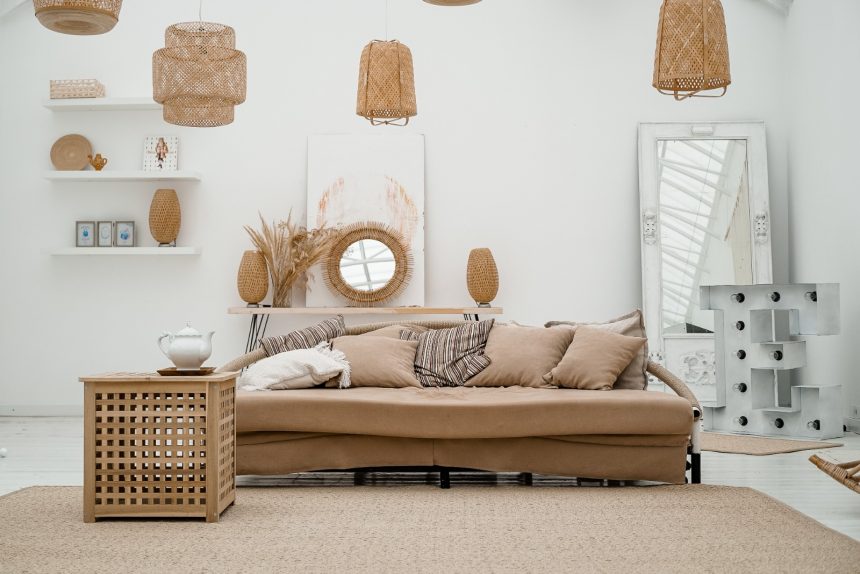
Leave a Reply